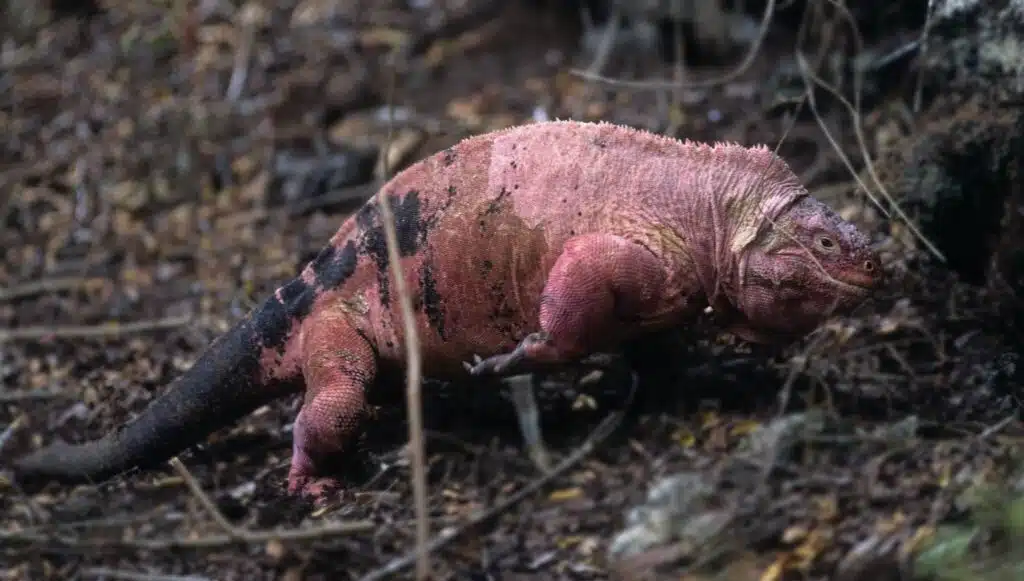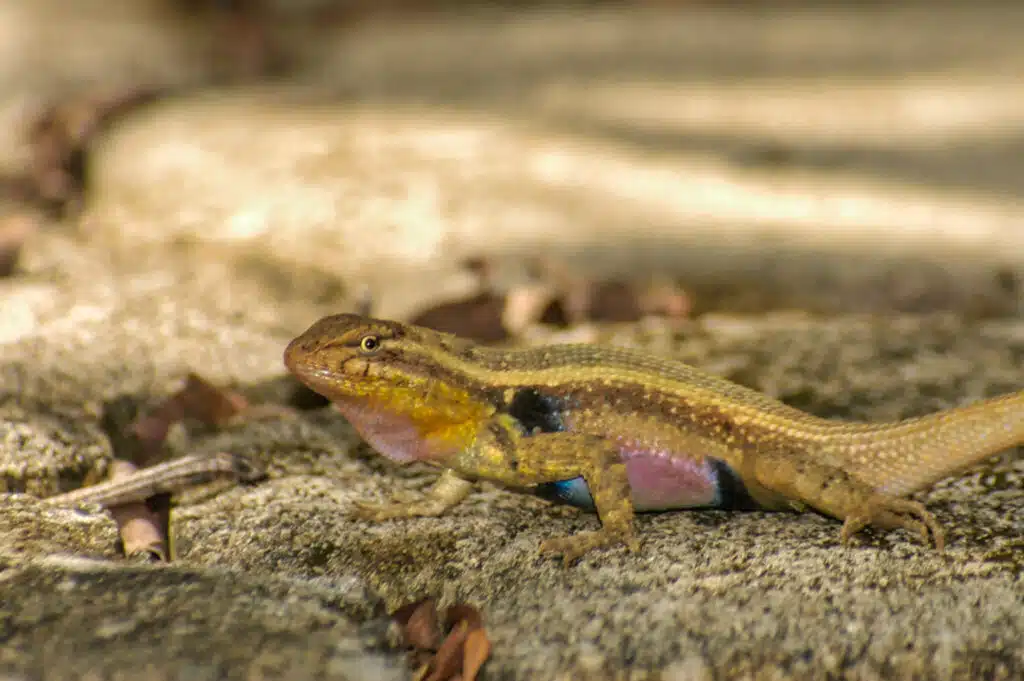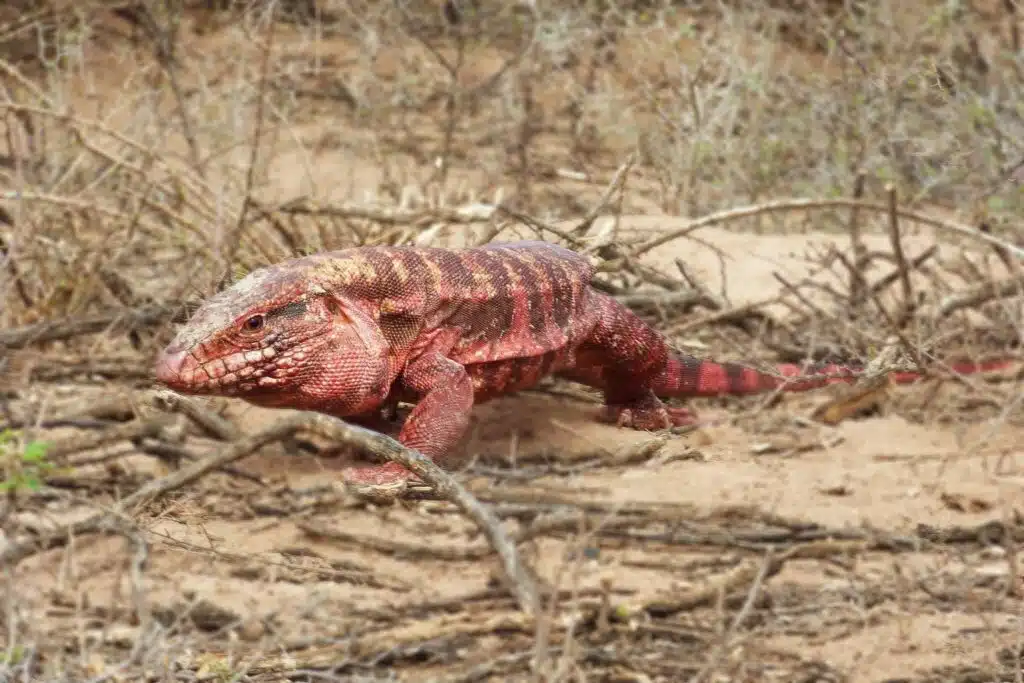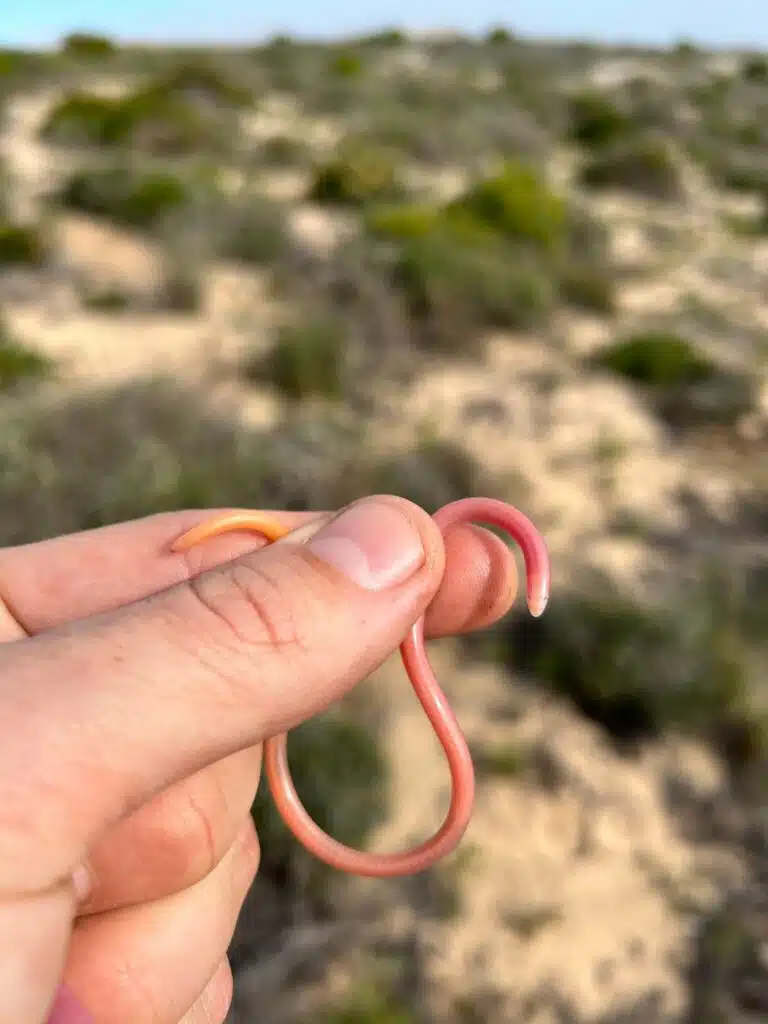Some of the rarest lizards in the world are pink. These are also some of the rarest types of lizards as opposed to brown or black ones.
Some pink lizards live underground and their existence goes unnoticed. Others live on tiny islands in the middle of the ocean, far away from inhabited areas.
While they can look friendly, pink lizards can also be venomous and highly carnivorous.
The following species of lizards are fully or mostly pink. They live around the world and are found in some of the most unusual places with some of them on the brink of extinction.
Table of Contents
1. Mwanza Flat-Headed Rock Agama
Male Mwanza Flat-Headed Rock Agamas (Agama mwanzae) are partly pink. They can be partly red as well. Its pink and red nuances are actually specific to its head and thorax while the lower body is violet.

Only the males are truly colorful as the females of the species are characterized by a dark appearance specific to a dark brown nuance.
There’s a theory that the head and the upper body of the male are brighter to attract females.
Male lizards move their heads up and down during an elaborate courtship process.
Specific to rocky African territories such as Rwanda, The Mwanza Flat-Headed Rock Agama is mostly found in captivity as its color combination looks distinct.
Males cost more than females based on their dual color appearance.
2. Galápagos Pink Land Iguana

Large, pink, and prehistoric-looking, The Galapagos Punk Land Iguana (Conolophus marthae) is among the pink lizards that are almost extinct.
Only found in an area as small as a few square miles in Northern Galapagos, the iguana is large and dominated by pink nuances.
Pale pink is most specific to the lizards. Almost as many pink nuances are seen on the iguana as on the nearby Ecuadorian Pink Land-Iguana.
Dark pink and bright pink nuances may make this species look apart, but it’s facing an uncertain future with only a few hundred of them alive today.
Living in a remote area, this is a lizard that faces few natural predators, with the exception of hawks.
3. Rose-Bellied Lizard

A brown type of lizard with pink undertones and pink patterns on the belly, Rose-Bellied Lizards (Sceloporus variabilis) are found in The Americas.
Occasional sightings are also reported as far North as Southern Texas.
These types of lizards show different types of adaptations to keep predators away. Yellow stripes along the dorsum and black bands on the back and tails are among them.
Pointy scales are also an adaptation of the species that makes them difficult to eat for predators.
Growing to a size of just over 5 inches, these lizards can be separated by gender according to their coloring and patterns.
Males are darker on the dorsum but they also have the pink underbelly patterns missing on the female.
Found in forests, grassland, and shrubland, these are lizards with a numerous presence in Mexico, Honduras, and Nicaragua.
The lizards are diurnal and nocturnal, often resting on warmed-up rocks during the day. Its high presence in certain areas also indicates a sedentary nature.
4. Gila Monster

Gila Monsters (Heloderma suspectum) are among the few pink lizards that can bite.
They are native to Southwestern US territories as well as to parts of Northern Mexico as they inhabit deserts.
Even some of the driest conditions in The Americas can be home to these species which are known as carnivores.
Even more, they have one of the most painful bites in the world of lizards that are also considered venomous.
One of the main problems with its bite is the strength of the bite coming from its jaws and long teeth.
This is a species known for its strong grip that lasts.
When it bites humans, its teeth and jaws work together to grab and hold for a few seconds, a common trait in venomous species.
The short-legged species are mostly interested in small animals instead of humans. It eats birds and their eggs together with other species such as frogs and tadpoles.
A known carnivore, this is a pink species with black marks but can also be orange and black or yellow and black.
Most days of the species are actually spent in the ground, to avoid desiccation.
5. Red Tegu

From forests to swamps, Red Tegus (Salvator rufescens) inhabit a vast area of South America, down to Argentina.
They live in warm climates and also need extra warmth when raised in captivity.
Red Tegus are some of the largest pink lizards in the world. They are known for reaching a size of up to 5 feet and have distinct dark patterns across the wide body.
A large species with plenty of strength, this is also a type of omnivore.
These dark pink lizards eat plants and fruit, as well as plenty of other types of animals.
They need extra space when raised in captivity with plenty of food.
As in the wilderness, Red Tegus are dependent on light and moisture. They prefer moist soils and a substrate that can retain moisture better.
With proper care, these lizards went on to live up to 20 years.
6. Pink Blind Legless Skink

Some lizards are legless and look like earthworms or underground snakes.
This is the situation of Pink Blind Legless Skinks (Typhlosaurus vermis), a species that spends most of its life underground.
It prefers loose sandy soils that retain moisture in South Africa.
Apart from its head, the lizard is dominated by pink nuances. It features a white or off-white head with a pointy shape which helps it make its way into the ground.
Reaching a size of just over 4 inches, it also comes in different shades of pink, from bright to dark pink, depending on its age.
Endemic to Namaqualand, the blind skinks give birth to live young. It’s a species that remains active throughout the year. While numerous, it can be a rare sight given it rarely surfaces as it lives in arid semi-desert climates.